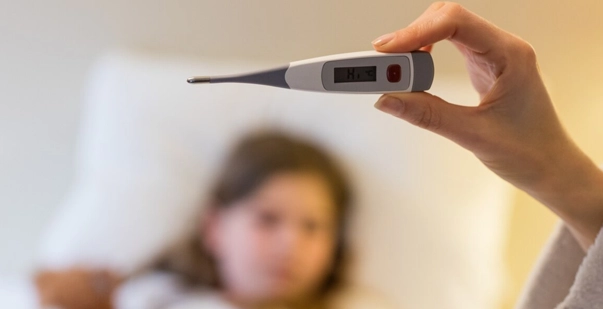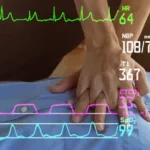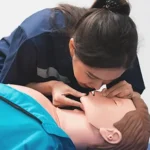Table of Contents
- Introduction
- What is Malignant Hyperthermia?
- Causes of Malignant Hyperthermia
- What are the Risk Factors of Malignant Hyperthermia?
- Signs and Symptoms of Malignant Hyperthermia
- Diagnosis of Malignant Hyperthermia
- Treatment of Malignant Hyperthermia
- What are the Supportive Measures for Malignant Hyperthermia
- The Bottom Line
The occurrence of malignant hyperthermia is estimated to be around 1 in 100,000 people undergoing general anesthesia. This life-threatening but rare condition can turn routine surgery into a medical emergency in minutes. Without warning, the body’s temperature skyrockets, and muscles lock up. Even the organs can begin to fail.
What makes MH even more frightening is that most people don’t know they’re at risk until it happens. So, what exactly is this dangerous condition, and how can it be treated or prevented? In this blog, we’ll cover what malignant hyperthermia is. We will also cover its causes, symptoms, and treatment options. It will help you understand how to stay safe in the operating room.
What is Malignant Hyperthermia?
Malignant hyperthermia is viewed as a pharmacogenetic disorder that affects the skeletal muscles. In susceptible individuals, exposure to specific anesthetic agents causes a hypermetabolic state. A hypermetabolic state can also occur due to muscle relaxants. This can lead to an accelerated rate of muscle contraction. In return, it produces heat and results in a rapid rise in body temperature. Halogenated anesthetics, such as sevoflurane and desflurane most commonly trigger it. Otherwise, it’s triggered by the muscle relaxant succinylcholine.
Though rare, MH is a medical emergency that requires immediate intervention. Patients who are genetically predisposed to this ailment might not exhibit any symptoms. However, the symptoms only occur when they are exposed to a triggering agent.
Genetic Link
MH is a genetic disorder caused by mutations in the RYR1 or CACNA1S genes. These genes encode proteins responsible for calcium regulation in muscle cells. When these genes are mutated, calcium regulation becomes impaired. This leads to excessive calcium release from the sarcoplasmic reticulum within skeletal muscle cells. This excess calcium triggers intense muscle contractions and a metabolic crisis.
Since malignant hyperthermia is inherited in an autosomal dominant pattern. This means only one copy of the mutated gene from either parent will be enough to cause susceptibility. If one parent carries the gene, there’s around a 50% chance that their child will inherit the condition. However, not every individual with the genetic mutation will experience an MH episode. It will only happen when they’re exposed to a triggering agent.
Also Read: Identify Differences: Heat & Dehydration with signs and advice
Causes of Malignant Hyperthermia
Malignant hyperthermia is typically caused by exposure to specific anesthetic drugs during surgeries. These drugs can initiate the chain reaction that leads to the uncontrolled release of calcium in muscle cells. Some of the most common triggers include:
-
Inhalational Anesthetic Agents:
The most common inhaled agents that can trigger MH are halothane, sevoflurane, desflurane, and isoflurane. These anesthetics act on the muscle cell’s calcium channels. They disturb the balance and cause an exaggerated release of calcium.
-
Succinylcholine
This depolarizing muscle relaxant is often used during surgeries for muscle paralysis. In MH-susceptible individuals, succinylcholine significantly increases the risk of triggering an episode by disturbing calcium homeostasis in skeletal muscle cells.
-
Exercise and Heat Stress
In certain cases, intense physical exercise or high environmental temperatures trigger MH. This will happen in all genetically predisposed individuals. These triggers work by elevating internal body temperature and placing stress on muscle tissues, which might lead to a hypermetabolic response.
What are the Risk Factors of Malignant Hyperthermia?
MH is known to occur due to specific triggers. However, certain malignant hyperthermia risk factors increase the likelihood of experiencing the condition, which is as follows:
-
Family History
Individuals with a family history of MH are at a much higher risk of developing the condition. Genetic testing can help detect those who may be susceptible.
-
Personal History of MH-like Symptoms
Previous episodes of unexplained issues like Muscle Rigidity, Hyperthermia, or complications during surgery. It may indicate malignant hyperthermia susceptibility.
-
Muscle Diseases
Some neuromuscular disorders, like central core disease, are linked with an increased risk of MH. These conditions also stem from mutations in the RYR1 gene, which makes individuals with these disorders more vulnerable.
-
Previous Adverse Reactions to Anesthesia
Patients might experience increased heart rate, muscle stiffness, or high fever after anesthesia. This could be a red flag for MH susceptibility.
Signs and Symptoms of Malignant Hyperthermia
Recognizing the early signs and symptoms of malignant hyperthermia is crucial for preventing severe complications. The clinical presentation of MH can vary, but common symptoms include:
- Rapid Increase in Body Temperature,
- Muscle Rigidity,
- Increased Heart Rate,
- Elevated Carbon Dioxide Levels,
- Acidosis,
- Dark Urine or Myoglobinuria,
- Low Blood Pressure.
Other early signs of malignant hyperthermia include irregular or patchy skin color. Excessive sweating and irregular heart rhythm are also some of its symptoms.
Diagnosis of Malignant Hyperthermia
Malignant hyperthermia is often diagnosed based on clinical symptoms during surgery, but genetic testing and muscle biopsy can help confirm susceptibility in patients with a family history or prior episodes.
-
Intraoperative Diagnosis
Malignant hyperthermia (MH) may be suspected during surgery if the patient exhibits sudden, unexplained symptoms. These symptoms are rapid body temperature rise and muscle rigidity. An abnormal increase in carbon dioxide levels despite adequate ventilation can also indicate MH. Immediate treatment is required, even if the diagnosis is not confirmed.
-
Genetic Testing
Genetic testing for mutations in the RYR1 and CACNA1S genes is available for people with a family history of MH. This testing is also available for individuals who are suspected of being susceptible. This test can confirm whether a person is at risk. Doing so will allow healthcare professionals to take precautions during future surgeries.
-
Muscle Biopsy (Caffeine-Halothane Contracture Test)
A more definitive test for MH susceptibility is the caffeine-halothane contracture test (CHCT). In this test, a small sample of muscle tissue was exposed to halothane and caffeine. If the muscle contracts abnormally in response, the patient is considered susceptible to MH. However, this test is invasive and not widely available.
Treatment of Malignant Hyperthermia
Once MH is suspected, immediate intervention is necessary. This will help prevent severe complications or death. Treatment primarily focuses on stopping the hypermetabolic response and stabilizing the patient.
Dantrolene: The First-Line Treatment
The ideal malignant hyperthermia treatment is dantrolene. This is a muscle relaxant that works by inhibiting calcium release from the sarcoplasmic reticulum. That way, it halts the muscle contractions. The drug should be administered as soon as MH is recognized.
The initial dose of dantrolene is 2.5 mg/kg, and it can be repeated until symptoms subside. Early administration is critical in improving the patient’s chances of recovery. In addition to dantrolene, supportive care is needed to manage the patient’s symptoms.
What are the Supportive Measures for Malignant Hyperthermia
Patients with MH susceptibility are also encouraged to carry medical alert bracelets. It will allow them to inform healthcare professionals of their condition during emergencies. Some of the supportive measures for malignant hyperthermia are:
-
Cooling the Patient
To bring down the body temperature, immediate cooling of the patient is necessary. This can be achieved using cooling blankets, ice packs, or intravenous cold saline.
-
Hyperventilation with 100% Oxygen
Malignant hyperthermia causes a buildup of carbon dioxide. Hyperventilation with 100% oxygen helps eliminate excess CO2 and improves oxygenation.
-
Treating Acidosis
If the blood pH drops below 7.2, intravenous sodium bicarbonate may be required to correct it. In addition, this intervention must support further management in conjunction with dantrolene and cooling measures.
-
Fluid Therapy
Intravenous fluids are essential to maintain blood pressure and kidney function. In cases of myoglobinuria, fluids can help flush myoglobin out of the kidneys to prevent acute renal failure.
-
Monitoring and Managing Complications
Continuous monitoring of vital signs, electrolytes, and organ function is crucial. Any complications, such as kidney damage or arrhythmias, should be addressed immediately. For individuals diagnosed with MH susceptibility, future surgeries should involve anesthetic agents.
Thus, all healthcare providers should be aware of the patient’s malignant hyperthermia anesthesia risk so that necessary precautions can be taken.
Also Read: Effects Of Illegal Drugs On the Heart
The Bottom Line
Malignant hyperthermia is a rare but severe ailment triggered by certain anesthetic agents. While it is life-threatening, quick diagnosis and treatment with dantrolene can prevent fatalities. Healthcare professionals must understand the causes and recognize the signs and symptoms of malignant hyperthermia. This helps implement effective preventive strategies for susceptible individuals and reduces the risk of malignant hyperthermia during surgery. The impact of MH can be minimized with genetic testing, patient education, and medical vigilance.
Healthcare professionals should keep on upskilling to stay ahead of others. This can be achieved by enrolling in a training program that could be managed alongside their work. As a result, patients will receive better care, and healthcare workers will grow professionally.







